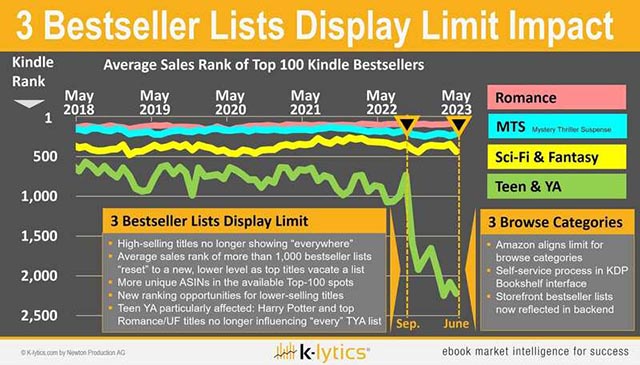
There was an announcement about how Amazon changes their bookstore recently and, in particular, changes to the category system, which affects all authors and publishers who sell on the giant retailer. But don’t be stressed out about it, because this is a quick analysis about:
What Has Changed?
Amazon has greatly simplified the process of selecting store categories for our books. The old process was to:
As you can imagine (or may remember), this was a pretty cumbersome process. Not all authors were aware of the second point, which put them at a strong disadvantage. And many of those who were aware of it then abused the process to get their books listed in as many niche categories as possible.
Now, you can have a maximum of three categories per book/format and you can select or update them at any point through your KDP Bookshelf.
Should You Do Anything About It Immediately?
It depends! If you’ve never requested extra categories from KDP Support and used only the two generic ones you could select with the previous process, then you should definitely log in to your KDP Bookshelf and go update those. However, if you did avail yourself of the additional categories workaround, and your book is currently in more than three categories, it will retain all its existing categories, unless and until you update its categories in KDP.
In other words, while you may not request additional categories (or categories changes) from KDP Support anymore, existing ones will remain if you don’t change anything. In some cases, that may be beneficial. In others, not so much.
Is This Change Good or Bad?
Some authors may be angry about losing the ability to get their books in a bunch of mildly relevant categories, but there may not be anything negative about this change. The KDP Support workaround for requesting additional categories was not only cumbersome, it also led to most categories being polluted with less-than-relevant books. This not only made for a terrible experience for readers browsing the store, but also messed up Amazon’s recommendation engine (partly powered by category metadata). Worse, it created a winner-takes-all situation.
Think about it this way: mainstream bestsellers like the Harry Potter series used to rank in 10 different categories and because of their sales figures, they used to take the top positions of the bestseller ranks in all of these 10 categories. This left little visibility to other books, even if those other books were much better suited to that category.
This category change doesn’t just fight pollution, it actually levels the playing field a bit more by distributing the chances of ranking top in a category. In that regard, it’s one of the rare Amazon changes that should actually benefit mid-list authors and publishers, rather than the current top sellers.
The following is a fascinating first bit of analysis in the graph, which perfectly illustrates the impact this change had on the broad “Teen & YA” category.

As you can see, picking the right categories to list each of your formats in is more important than ever, and may now make an actual difference to your book’s visibility on Amazon.
ABOUT THE AUTHOR(s):
Founder of coInnovate Digital & Design Group, a creative marketing agency, Melanie is also the lead developer of Leet De-Deet.
When not performing her duties for this website and at coInnovate, she spends her free time creating books for kids and her fellow technologists.
Please confirm you want to block this member.
You will no longer be able to:
Please note: This action will also remove this member from your connections and send a report to the site admin. Please allow a few minutes for this process to complete.